Heng Wu
Mathematical artificial data for operator learning
Jul 09, 2025Abstract:Machine learning has emerged as a transformative tool for solving differential equations (DEs), yet prevailing methodologies remain constrained by dual limitations: data-driven methods demand costly labeled datasets while model-driven techniques face efficiency-accuracy trade-offs. We present the Mathematical Artificial Data (MAD) framework, a new paradigm that integrates physical laws with data-driven learning to facilitate large-scale operator discovery. By exploiting DEs' intrinsic mathematical structure to generate physics-embedded analytical solutions and associated synthetic data, MAD fundamentally eliminates dependence on experimental or simulated training data. This enables computationally efficient operator learning across multi-parameter systems while maintaining mathematical rigor. Through numerical demonstrations spanning 2D parametric problems where both the boundary values and source term are functions, we showcase MAD's generalizability and superior efficiency/accuracy across various DE scenarios. This physics-embedded-data-driven framework and its capacity to handle complex parameter spaces gives it the potential to become a universal paradigm for physics-informed machine intelligence in scientific computing.
Hyperspectral image reconstruction for spectral camera based on ghost imaging via sparsity constraints using V-DUnet
Jun 28, 2022
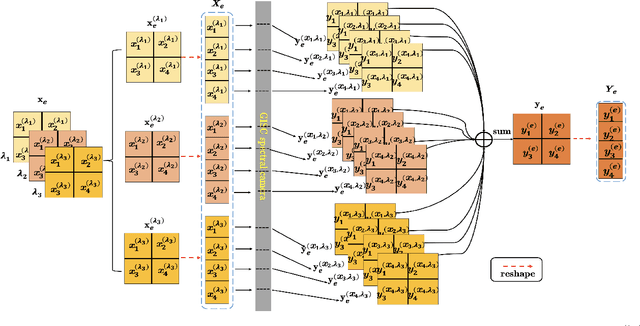
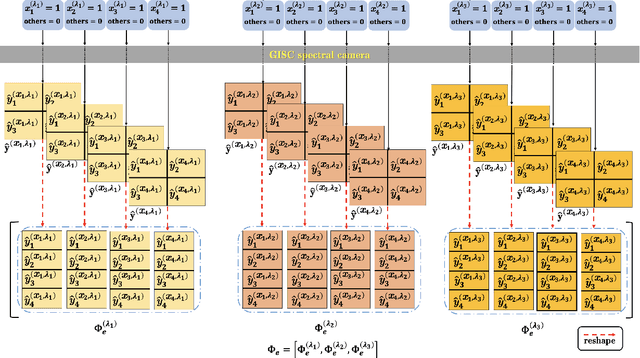
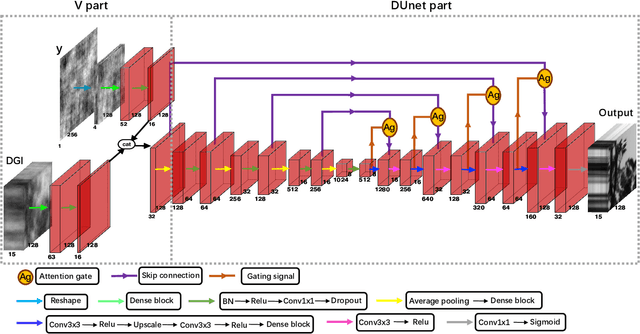
Abstract:Spectral camera based on ghost imaging via sparsity constraints (GISC spectral camera) obtains three-dimensional (3D) hyperspectral information with two-dimensional (2D) compressive measurements in a single shot, which has attracted much attention in recent years. However, its imaging quality and real-time performance of reconstruction still need to be further improved. Recently, deep learning has shown great potential in improving the reconstruction quality and reconstruction speed for computational imaging. When applying deep learning into GISC spectral camera, there are several challenges need to be solved: 1) how to deal with the large amount of 3D hyperspectral data, 2) how to reduce the influence caused by the uncertainty of the random reference measurements, 3) how to improve the reconstructed image quality as far as possible. In this paper, we present an end-to-end V-DUnet for the reconstruction of 3D hyperspectral data in GISC spectral camera. To reduce the influence caused by the uncertainty of the measurement matrix and enhance the reconstructed image quality, both differential ghost imaging results and the detected measurements are sent into the network's inputs. Compared with compressive sensing algorithm, such as PICHCS and TwIST, it not only significantly improves the imaging quality with high noise immunity, but also speeds up the reconstruction time by more than two orders of magnitude.
A Rigid Registration Method in TEVAR
May 19, 2021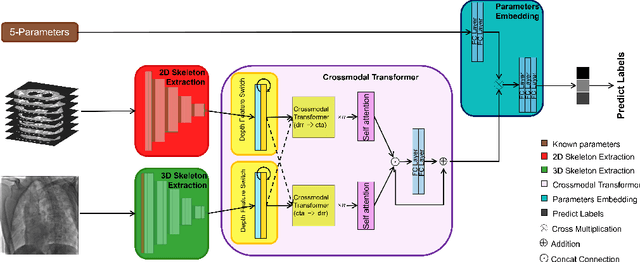

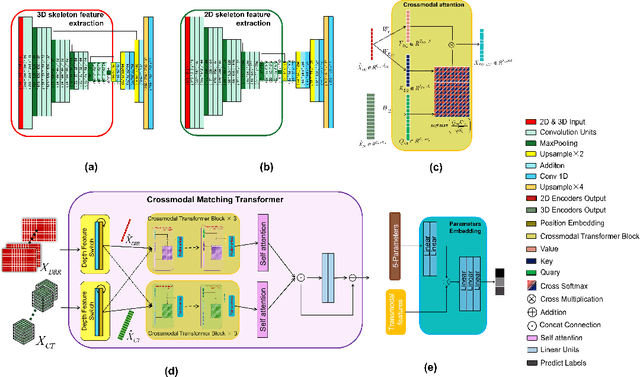
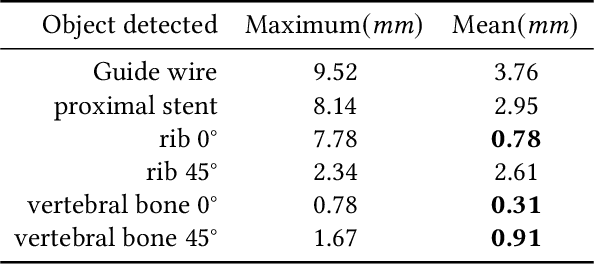
Abstract:Since the mapping relationship between definitized intra-interventional 2D X-ray and undefined pre-interventional 3D Computed Tomography(CT) is uncertain, auxiliary positioning devices or body markers, such as medical implants, are commonly used to determine this relationship. However, such approaches can not be widely used in clinical due to the complex realities. To determine the mapping relationship, and achieve a initializtion post estimation of human body without auxiliary equipment or markers, proposed method applies image segmentation and deep feature matching to directly match the 2D X-ray and 3D CT images. As a result, the well-trained network can directly predict the spatial correspondence between arbitrary 2D X-ray and 3D CT. The experimental results show that when combining our approach with the conventional approach, the achieved accuracy and speed can meet the basic clinical intervention needs, and it provides a new direction for intra-interventional registration.
 Add to Chrome
Add to Chrome Add to Firefox
Add to Firefox Add to Edge
Add to Edge